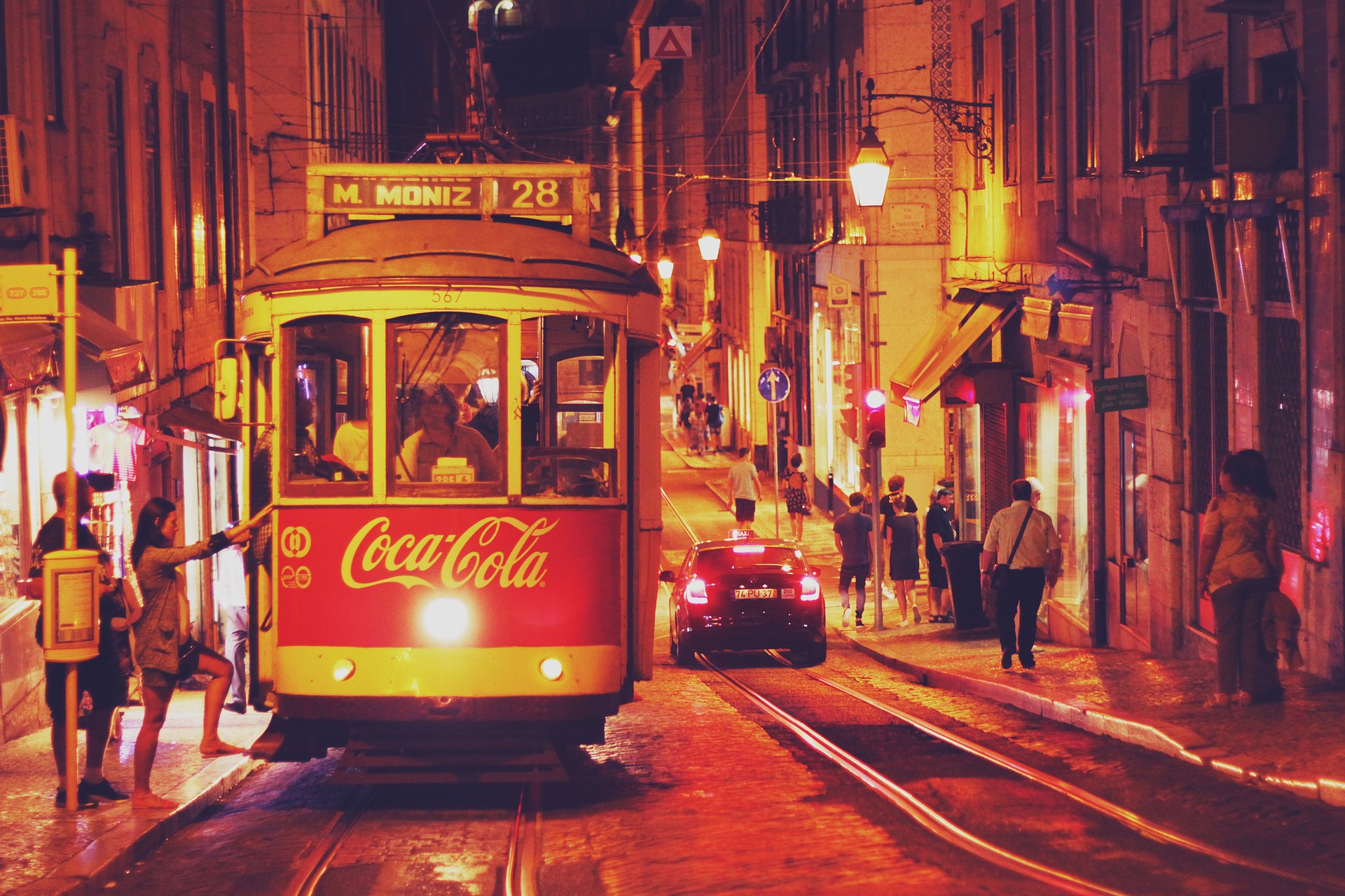The human occupation of the present area of the city of Almeirim is very old. It will have been the proximity of the Tejo river and natural wealth that will have contributed to the installation of men in this region. There are traces of human presence from prehistory to Roman times throughout the Tejo valley. Examples of the human presence in the city are the epipaleolithic of the “Fonte da Moça” valley, the recently identified milestones belonging to the roman road that linked Lisbon to Mérida in Spain, and the Roman villa of Azeitada in Benfica do Ribatejo.
Basketry in wicker, crockery and woodwork are the typical ex-libris of the region.
CASCAIS
Archaelogic studies have unveiled the presence of humans in Cascais since 4/6000 years ago, probably since the paleolitic. Remains of ancient populations have been found in small towns like Tires, Talaíde and in the natural caves of Poço Velho.
A roman heritage in also found in some places in the region of Cascais and after that, were the muslims that ocupied the area. The names Alcoitão and Alcabideche, small towns of Cascais, are part of their heritage.
In the 12th century, it was finally conquered by the first king of Portugal, Afonso Henriques. It was then a small fishermen and land workers village, and the name Cascais is the plural of “cascal” in portuguese, meaning mount of rinds, probably derived from the catch of great quantities of sea clams in the region.
For those interested in visiting monuments and museums, the Cascais-Estoril area offers many options from houses dedicated to the fine arts, to historical monuments, to exhibition centres, like for example the Paula Rego Museum, the House of Stories and Drawings of Paula Rego was inaugurated in 2009. Brought to life by Paula Rego herself, with the cooperation of the Cascais Town Hall; The Sea Museum, home to several permanent exhibitions linked to marine biology and the relationship between Men and the Sea, also hosts temporary exhibitions, and the museum’s name renders homage to Portugal’s last King D. Carlos de Bragança as he was a great lover of the sea and patron to many activities linked to it; visit also the Cascais Cultural Centre that is located in what used to be the Convent of Our Lady of Mercy (Convento Nossa Senhora da Piedade) and demarked by its bright colours.
The Cascais & Estoril area is known to be rich in beaches, sights and attractions, causing this area to be quite sought after by locals and tourists. From historical buildings dating back to as early as the 15th Century such as forts, churches and small palaces there are also several multifunctional parks in which one can spend time with one’s family, take a morning jog or read a book whilst taking advantage of the flora’s pleasant shade on a hot summer day. Other interesting landmarks include cliff rock formations such as the Boca do Inferno, the brand new marinas of Cascais and Oeiras which are a little more than just a safe harbour in which to berth a ship and let us not forget Europe’s largest casino, the Estoril Casino.
ERICEIRA
A very old typical fishing village, presumably a place of passage and installation of the Phoenicians. The legend says that the name Ericeira originally meant “land of hedgehogs” due to the numerous sea urchins that abounded on its beaches. However, more recent investigations point to the hedgehog and not the sea urchin as an inspirer of the name. With the discovery of a copy of the old coat of arms of the Village, today in the Archive Museum of Misericordy, it was confirmed that the animal drawn there is, in fact, a hedgehog.
The history of Ericeira goes back to around 1000 BC. But it was in the 19th century that Ericeira had its golden age, enormous increase, because it was the busiest port of the region, with customs, where it was made supply of almost the entire province. The old commercial importance has today corresponded in the remarkable tourist movement, resulting from the situation and the privileged climate that enjoys. Local of ship for the exile of the Portuguese royal family, an episode that marks the end of the monarchy, will always make Ericeira one of the most dramatic places in the geography of that region. It´s also well known in for surfing, due to the waves of the area, which surfers say that they are different. But not only surfing is popular in these waters, also kiteboarding and windsurfing, and stand-up paddle. Ericeira is also the 1st world surfing reserve in Europe and 2nd in the world.
Touring around Ericeira is also an excellent opportunity to taste the varied dishes of seafood and fresh fish, gastronomic specialty of the region.
LISBOA
The westernmost capital in Europe, located in the west of the country, on the Atlantic coast at the point where the river Tejo, flows into the Ocean. Lisbon is Portugal’s largest city and the political and economical center of the country, one of the oldest cities in the world, founded before other European capitals such as London or Paris. It was settled during at least the Neolithic, and you can find Celtic, Phoenician and mostly Roman and Muslim remains throughout the city, witnessing its old origins. That’s why almost each time a new underground construction or infrastructure is initiated in Lisbon’s historical centre it has most likely to be interrupted so the archaeologists can identify and preserve the found remains.
By 1755, Lisbon was one of the splendorous cities in Europe, but on 1 November 1755, the city was destroyed by a devastating earthquake, followed by a tsunami, which killed around 40,000 people and destroyed a significant part of the city’s buildings.
The most recognized of Lisbon’s major attractions, St. George’s Castle commands a glorious position near Alfama, the oldest quarter of the city. Also a highlight of any Lisbon sightseeing tour, is the 16th century Jerónimos Monastery as one of the great landmarks of Portugal, from the Discoveries period. A sparkling gem in Lisbon’s cultural crown, is the Calouste Gulbenkian Museum and also one of the most celebrated museums in Europe, worth visiting for sure.
Lisbon is a colorful and vibrant destination. Renowned for its warm and sunny disposition, it´s blessed with a wealth of historical monuments, world class museums, and a host of other fabulous visitor attractions. You can explore the narrow streets of the old quarter Alfama, stroll the riverbank promenade, or wander through the amazing viewpoints, such as “S.Pedro de Alcantara”, Our Lady of the Mount or “Portas do Sol”.
MAFRA
Archaeological remains suggests that the village now known as Mafra was inhabited at least since the Neolithic period. The origin of the term Mafra continues shrouded in mystery, knowing only that it evolved of Mafara, Malfora and Mafora.
Mafra is a small portuguese town that has one of the largest and most extravagant Palaces in Europe, the “Palace and Convent of Mafra”. This vast complex, from the 18th Century, includes a huge monastery, an amazing basilic and a library containing more than 36,000 ancient books and its own colony of bats! That’s right…bats!! They live in the library and protect the ancient books from insect damage.
Mafra is only 30km to the north west of Lisbon and the town makes for an enjoyable day trip from the capital. The main attraction of Mafra is the outstanding palace but there are few other sights to extend a visit to Mafra. The town centre is pretty, with a relaxed ambience and a good selection of restaurants and cafes, ideal for a long lunch.
In the surrounding area, it is worth visiting the José Franco pottery workshop, better known as “José Franco Village” in the town of Sobreiro, where you can enjoy the more traditional aspects of the local village life, in full size or in miniatures animated, made of clay.
Also not too far from there, it´s 10 minutes distance and you are at the beach, in the beautiful fishing village of Ericeira, where it was also very frequent in the 19th century to find there the Queen of Portugal, Maria II, to bathe in those that would be considered miraculous waters. The whole region is rich in history, and vast in cultur, where the cattle fairs, or even the weekly Malveira fair are one of the ex-libris for those who visit us.
SANTARÉM
The Capital of the Gothic in Portugal, although there are other Portuguese cities equally candidates for this title, Santarém is an ancient city, having been conquered to the Moors by our first King Afonso Henriques. The period of Muslim rule ended in 1147 with the conquest of the castle by the Portuguese king.
According to the archaeological remains, the human occupation in the region of Santarém dates back to prehistoric times, followed by the Lusitanians, later the Phoenicians, Greeks, Romans, Alans, Vandals, Visigoths, Moors and finally the Portuguese.
Santarém was a favorite place of Portuguese kings, especially King Fernando, who wanted to be buried in the Convent of St. Francis. The city is also linked to the period of portuguese maritime expansion between the 15th and the 16th centuries, being the birthplace of Pedro Álvares Cabral, the great portuguese navigator who discovered the Land of Vera Cruz, the first name given to Brazil in 1500 and today this great Portuguese navigator is buried in the Church of Grace, near his house and Museum. It houses a number of interesting churches and the popular Garden of “Portas do Sol” (Sun Gate) , surrounded by the medieval walls of the city, offering magnificent views of the plains and the Tejo River.
The city was the scenery of countless “Cortes”, but it was losing importance to Lisbon, on the coast, which later became the seat of the diocese. Was also in Santarém the stage that made Official the Military Order of the Tower and Sword of Value, Loyalty and Merit in 1919.
The local gastronomy, dominated by the flavors of the river and the Ribatejo river, as well as regional wines that are not due to others better known.
SINTRA
Sintra is a picturesque Portuguese village, located in the center of the hills of the so known and called “Serra de Sintra”.
The magnificent village of Sintra is all magical and full of splendor, a romantic kingdom where majestic palaces, a fairytale castle, characterized by its singular charm and serenity, it offers stunning scenery with its vast rocky mountain range, dense vegetation and pristine beaches. Designated as “Serra da La” by the Celts or “Mons Lunae” by the Romans, the mystical mountain range of Sintra also encompasses a vast natural park that stretches to the coast of Cascais. World Heritage of Sites by Unesco, is no wonder that the Portuguese and British elites gathered here in the 18th and 19th centuries. Magnificent properties and great Palaces arose all over Sintra, each trying to be greater than others with architectural and decorative features.
There is also a whole literary heritage that has transformed this place into an almost legendary reference. Sintra, whose earliest known medieval form “Suntria” will point to the Indo-European “luminous star” or “sun”, has been designated as “Monte Sagrado”, sacred mount. In remote times, also characterized as “permanently steeped in a haze that does not dissipate.”
We can find in the village of Sintra testimonies of virtually every period in portuguese history and, not infrequently, with a dimension that has exceeded, by its importance, the limits of this territory.
The historic center of Sintra is an open-air museum filled with magnificent treasures. Here you will find beautiful cobbled streets, filled with charming shops, antique places and traditional cafes, all around the Gothic style of the National Palace. Snaking along one of the mountain peaks stands the Moorish Castle, which dates back to the 8th/19th centuries and is a testament to Portugal’s past. The eccentric Palácio da Pena, one of the ex-libris of this mountain landscape, is considered one of the most original architectural masterpieces of modern times.
Admire the spectacular sunsets on the beaches of Sintra, in the charming fishing village of Azenhas do Mar, but ideally, you’ll need two, if not three or four days to fully appreciate its charms.
TORRES VEDRAS
The human presence in this area goes back to prehistory, more precisely to the inferior Paleolithic. Since then, numerous civilizations have settled here attracted by the great conditions of these lands, dedicating themselves mainly to the agriculture, the cattle raising and the copper metallurgy. During the first centuries of our Era, the Romans also choose the fertile valleys of Torres Vedras for the settlement of numerous country houses, and began to cultivate the vineyard. However, only after the Christian Reconquest, Torres Vedras has its historical statement.
The foundation of the county will go back to the reign of king Afonso Henriques, although the first foral date of 1250, attributed by D. Afonso III, reformed later by King Manuel I, in 1510.
A stage of memorable events, it was in this city that our King João I met with his council in 1413 to deliberate on the conquest of Ceuta, that gave beginning to the Portuguese navigations. Another important historical fact is the complex defensive system of the “Linhas das Torres”, that allowed to overcome the Napoleonic troops during their invasions.
Very close to Lisbon you will be surprised by an area full of attractions for those who like contrasting landscapes, history, sports, gastronomy and friendly and very festive people.
To make your visit sweeter, be sure to try the typical “Pastéis de Feijão”, flavors of a land you will remember!





